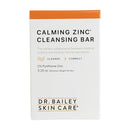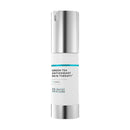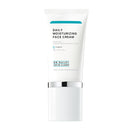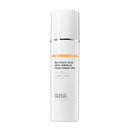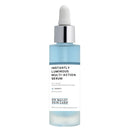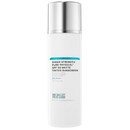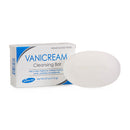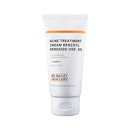Does Your Aloe Vera Gel Really Contain Aloe?

Bloomberg News did some interesting investigative journalism recently. They hired a lab to test for aloe in the most popular, mass produced aloe vera gel products -- including those sold by Wal-Mart, Target and CVS.
Does Your Aloe Vera Gel Really Contain Aloe?
Apparently, aloe vera gel products are a growing big business with over $146 million in sales last year and growing by 11% annually.
The lab hired by Bloomberg found NO aloe markers in these products in spite of aloe vera leaf juice being listed as the very first ingredient! Instead they found ingredients used to fake aloe vera.
The Bloomberg article stated that the supplier used in these products sources their aloe from an organic and fair trade farm in Guatemala. It’s complicated knowing who to trust and where the break-down in integrity may be. It’s a wakeup call for consumers, and a great example of how complicated consumer products are. Of course, class action lawsuits are being filed.
One of the really fascinating aspects of this is the size of the aloe business, and that there is fake aloe being made and sold. A quote from the article says,
Jeff Barrie, a Keene, New Hampshire-based sales manager at AloeCorp, one of the biggest suppliers of raw aloe powder, said he’s seen competitors beat his lowest prices by half. That means they’re not selling aloe, he said. Aloe powder can cost as much as $240 a kilogram, he said, while the same amount of maltodextrin (used to imitate aloe) can cost a few dollars.
Making just 1 kilogram of aloe powder, the ingredient used in finished goods like gels and drinks, requires 400 kilos (882 pounds) of aloe leaves, Barrie said. The process involves removing rinds from the leaves and dehydrating the remaining aloe into a powder form.
“Aloe is all harvested by hand,” Barrie said. “It’s an involved process and it’s not cheap.”
Why is aloe vera gel so popular as a skin care remedy?
Aloe vera gel has been used as a home remedy for skin problems for years. Scientific study didn’t support the evidence for folk remedy claims until more recently, however.
During my dermatology residency training in San Diego in the mid-1980s, many of my patients had aloe vera plants in their gardens and used them as a cure-all. I was intrigued and did a scientific literature search. Surprisingly, I could only find concrete scientific evidence for aloe's benefit in helping to heal burn wounds.
Since then, science has caught up with folk medicine, and there are now more solid scientific studies showing that aloe helps heal a number of skin conditions.
These skin problems include:
- wounds,
- burns, and
- inflammatory rashes such as eczema.
Aloe may even help prevent skin's sun damage, though it is not a sunscreen and does not appear to protect skin as an antioxidant. It means that the science is complicated and we can expect more interesting information in the future. I'm a big fan of aloe vera as an ingredient in skin care and have several products that contain it.
I also know that misleading 'fairy dusting' shenanigans of popular ingredients in insignificant quantities and faking them altogether is unfortunately common in skin care. It is shocking, but it happens all the time. Labels are often fictional prose aimed to evoke the imagination and a 'buy now'. Integrity is often in short supply.
Green tea is an excellent example of this sort of ‘fairy dusting’ label fiction for market appeal. “Green tea” is added to many products that will claim to capture the antioxidant properties of this popular ingredient. Yet, insignificant amounts, unstable fractions in unstable formulations, or the inactive parts of green tea may be what you are getting. To capture the proven benefits of green tea in skin care, a lab needs to use the highly purified polyphenol actives in high concentration and formulate them into a stable product.I know how great purified green tea polyphenols are, and that is what's in my Green Tea Antioxidant Skin Therapy. I use 80-90% pure and stable green tea polyphenol isolates in this product - it's the 'real deal' and it works. It can't be compared to so many of the fictional prose label 'fairy dusted' green tea products available.
Well, it looks like aloe is joining green tea, vitamin C and a host of other popular actives in the marketing shenanigans of the skin care business. This topic sends me spinning.
Like with all skin care products, 'the devil is in the details' and 'buyer beware'!
Labels commonly mislead consumers, but the back label of ingredients shouldn’t lie. Label 'fantasy-fiction' is one of my personal pet-peeves - and it's why I'm so picky about skin care products. It is not uncommon for commercial products to boldly boast trendy ingredients, yet fall short when it comes to efficacy.
So many popular products contain only minute amounts and/or poorly sourced and adulterated celebrity ingredients. These ingredients are included to benefit product marketability only, and not skin care routine. It makes me crazy! - Dermatologist Dr. Cynthia Bailey
I have lovely skin care products that are formulated with real aloe vera. The aloe is used in these products because it is a natural botanical that helps hydrate skin and/or creates an elegant feel to a cream.
The aloe in my products is part of the formulation, but to truly capture the wound healing efficacy of aloe vera, you need use pure gel with nothing else added.
If you want guaranteed pure aloe gel to treat wounds, burns or a specific skin condition, why not buy a plant?
The studies showing the medicinal benefit of aloe are done on pure gel. If you want to reap those benefits, why not make your own gel? Aloe vera is a succulent plant and it's easy to grow but you need the right variety.

The Aloe variety that is used medicinally is Aloe barbadensis miller.
How do you prepare aloe vera from the plant to use medicinally?
Naturalhealers.com has a good guide to aloe vera juice and gel. The inner clear gel is what you should be looking for. Wikihow.com gives you good instructions for making your own aloe vera juice. I've done this and aloe juice is delicious. The greener, yellowish gel near the leaves contain ingredients that can be allergens, laxatives and cause other troubles. It's best to avoid that. It also tastes bad and smells like dirty sox.
Beware of products touting aloe vera
In my 35+ years of medical practice, my patients have brought me dubious aloe vera products that they were using as a home remedy to heal a skin rash, wound or burn. When we read the label together, we find that the product lists other ingredients that are probably responsible for any relief they have felt and/or side effects they were experiencing.
For example, aloe gel burn relief products often contain topical anesthetics such as benzocaine that numb discomfort.
These are ingredients I do NOT recommend; they are potent allergens that risk creating lifelong allergies to many related and common ingredients such as PABA sunscreens, sulfa drugs, thiazide diuretics and permanent hair dye.
Other products, such as the Target Aloe Vera gel implicated in the Bloomberg article contain glycerin, which is a nice skin hydrator that will soothe many skin problems.
The four gels that were analyzed in this new study also contained other ingredients that are not so wholesome in your skin care products including:
- formaldehyde releasing preservatives: dmdm hydantoin and diazolidinyl urea.
- “fragrance” which is a common allergen and may potentially contain phthalates, which are known hormone disrupters and used in "fragrance" ingredients to help scent linger.
The bottom line about aloe vera gel products
Consumers need to exercise caution when buying products that they use often and that are important to them. I always recommend reading ingredient labels and doing some research when you are unsure. That said, we should all be able to trust that the ingredients are truthfully stated.
I personally have always been a little paranoid about ingredients. I do my homework and personally know the people at the labs that make my products.
My priority is to weed out shenanigans like this.
- It’s why I have a small collection of products, and they are all products I trust.
- It’s why I didn't build one of those huge middle-man/woman sites, selling every skin care product under the sun from snake oil to fake aloe vera gel.
This Bloomberg news on aloe vera is indeed disturbing. I'm going to work even harder 'to have our backs'.
If you found this useful and would like more skin health and wellness straight from a rebel dermatologist, I invite you to sign up for my free eNewsletter (we never share/sell your address!!)
References:
Mariko Moriyama,, Hiroyuki Moriyama, Junki Uda, Hirokazu Kubo, Yuka Nakajima, Arisa Goto, Junji Akaki, Ikuyo Yoshida, Nobuya Matsuoka, and Takao Hayakawa., Beneficial Effects of the Genus Aloe on Wound Healing, Cell Proliferation, and Differentiation of Epidermal Keratinocytes, PLoS One. 2016; 11(10): e0164799. Published online 2016 Oct 13.
Takzaree N, Hadjiakhondi A, Hassanzadeh G, Rouini MR3, Manayi A, Zolbin MM., Transforming growth factor-β (TGF-β) activation in cutaneous wounds after topical application of aloe vera gel. Can J Physiol Pharmacol. 2016 Dec;94(12):1285-1290. Epub 2016 Jul 14.
Rodrigues D, Viotto AC, Checchia R, Gomide A, Severino D, Itri R, Baptista MS, Martins WK., Mechanism of Aloe Vera extract protection against UVA: shelter of lysosomal membrane avoids photodamage. Photochem Photobiol Sci. 2016 Mar;15(3):334-50. doi: 10.1039/c5pp00409h.
Finberg MJ, Muntingh GL, van Rensburg CE., A comparison of the leaf gel extracts of Aloe ferox and Aloe vera in the topical treatment of atopic dermatitis in Balb/c mice. Inflammopharmacology. 2015 Dec;23(6):337-41. doi: 10.1007/s10787-015-0251-2.
Amar Surjushe, Resham Vasani, and D G Saple, Aloe Vera: A Short Review, Indian J Dermatol. 2008; 53(4): 163–166.doi: 10.4103/0019-5154.44785PMCID: PMC2763764


